Arts Miami
AJ Views “Human Rites” at the Bass Museum


Anthony Japour (AJ) is an independent curator, private art dealer and owner of AJ Japour Gallery. The gallery deals in contemporary art with a focus on the Chinese Contemporary Art Movement and its relationship to the pillars of Western Contemporary Art. Since 2003, AJ has produced numerous art exhibitions and installations in Miami and South Florida. In addition, the Gallery’s secondary mission is to support organizations dedicated to the health, education, and welfare of children. AJ has served on the Fine Arts Board and the Cultural Arts Council of the City of Miami Beach.
Human Rites is the second of three installments of the Endless Renaissance series at the Bass Museum of Art that began in 2009 and will conclude with a publication in 2012. It was curated by Silvia Karman Cubina, Bass Museum of Art executive director and chief curator and Steve Holmes, adjunct curator, Bass Museum of Art.
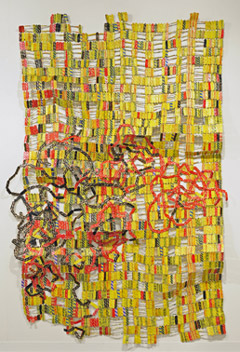
The exhibit successfully weaves and juxtaposes the Bass Museum’s 15th and 16th Century altarpieces alongside contemporary artists like Ai Wei Wei, Rirkrit Tiravanija, Massimo Vitali, Subodh Gupta, Sophie Calle and many others. Beyond the artists themselves, the exhibition examines “ritual through art” and “art through ritual”, displaying a communion of the old and the new in a way that is intellectually and visually intriguing, yet thoughtful and respectful as well.
Sampling of the exhibition’s offerings:
Marina Abramovic, who recently finished her solo exhibition at the Museum of Modern Art in New York, entitled The Artist is Present, figures prominently in two works loaned by the Ella Fontanels-Cisneros Foundation and Collection Martin Z. Margulies. Born in 1946 in Yugoslavia (now known as Serbia), Ambramovic is considered a pioneer in performance art and uses her “body” as both the subject and medium for her work documented primarily through the camera lens. In Count On Us (Chorus), 2003, first exhibited for the 2003 Venice Biennale, Abramovic is dressed like a skeleton and lies on the ground in the middle of a group of children arranged as a military symbol in a five-pointed star. In the series of videos, Abramovic is commenting on the atrocities committed in the aftermath of the fall of Communism in Yugoslavia. Here the curators see Abramovic as a martyr-like figure taking center stage as a victim in the disintegration of totalitarianism.
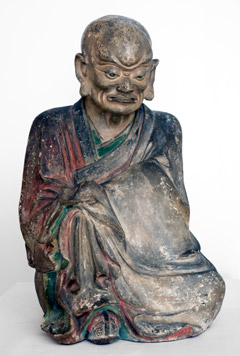
El Anatsui (born 1944 in Ghana) had his break-out moment in the 2007 Venice Biennale when Robert Storr, the Biennale’s curator wanted to give him an international opportunity to exhibit beyond Africa. It is often said that artists produce great art by absorbing the world around them and reflecting the times in their work. Anatsui, among other artists such as Miami’s Pablo Cano, uses found objects in the creation of his works, commenting on the importance of garbage recycling in the industrialized global economy. Experimenting with bottle caps and copper wire, Anatsui began creating his signature “cloths”; the work at the Bass Museum, Bukpa Old Town 2009 is one of the most beautiful pieces in the exhibition with its yellow, orange, and green hues suggesting fall in northern climates. Anatsui’s cloths are reminiscent of “Kente cloth” which has its origin with the Akan people of Ghana and is a sacred cloth that was once the cloth of kings.
Weaved throughout the exhibition are works like that of the Unknown artist (probably Chinese) of a sculpture of an Arhat (Buddhist Monk), Yuan Dynasty 1206-1368. The first disciples of Buddha are called Arhats. As they had attained the highest level of enlightenment, Arhats were no longer In the 1980’s Christian Boltanski began creating alter-like installations, again using found objects. In the work on view, the artist creates a shrine to victims of mass murder by arranging the photographs of the faces of young Jewish school children taken to Vienna in 1931. Just below are stacks of clothing collected from the lost-and-found department of train stations suggesting the loss of the victims of the Nazi concentration camps.
One of the more amusing works on view is by Thomas Hirschhorn, Necklace CNN, 2002 on loan by Debra and Dennis Scholl. Hirschhorn (born 1957, Switzerland) is commenting on the decline of hard news and the biased worldview of cable network television. Other artists, like Wang Du, who is part of the Chinese Diaspora, living and working in Paris, offers similar points of view as related to the manufacturing of news by print and television through his bronze sculptural works of crumpled newspapers.
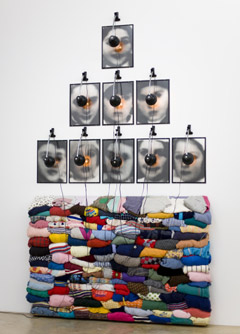
Human Rites is a “do not miss” exhibition that remains on view until October 3rd. See it, you’ll be glad you did!
Thomas Hirschhorn
Necklace CNN, 2002
Cardboard, foil, plastic
and gold wrapping paper
Bass Museum of Art
2121 Park Avenue, Miami Beach

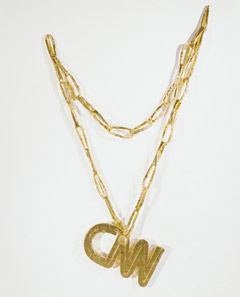
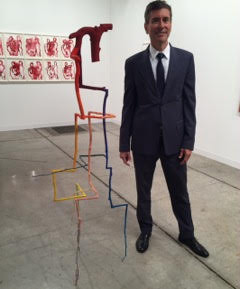
Anthony Japour is an art collector and art advisor. Japour lectures on the Chinese Contemporary Art Movement and its relationship to the pillars of Western Contemporary Art. For over a decade [2002-2012], Japour mounted numerous art exhibitions and installations in Miami Beach and South Florida through AJ Japour Gallery and linked these exhibitions to charity events at his home in South Beach devoted to the health, education and welfare of children. Japour has served on the Fine Arts Board and the Cultural Arts Council of the City of Miami Beach. Japour has been a contributor writing on contemporary art for SocialMiami.com since 2010.


